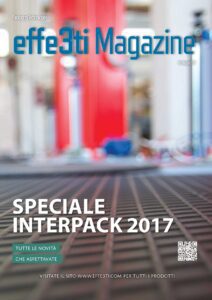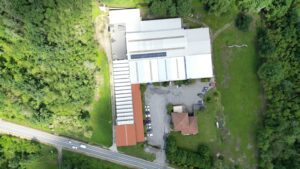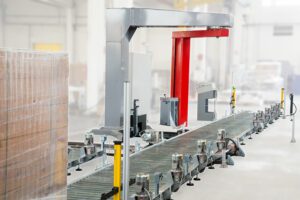A few simple considerations can reveal that it is time to move towards automation
You might think that themanual winding This may be the easiest method if your company produces only a few pallets, but what happens when production increases and you find yourself shipping more frequently?
There is no quick and clear rule that says when it is time to switch to a Spinny pallet wrapper, but it is not difficult to understand which type of wrapping is the fastest and most economical. It is worth thinking about what the costs are behind your wrapping method, especially when there is damage to the products and significant investments in consumables: everything increases in relation to the increase in the number of pallets that are shipped.
Damage to products?
Product damage is a very serious problem, leading to waste and unnecessary costs. Damage to products during transport, caused by improperly wrapped loads, is a cost factor that should never be overlooked.
Statistics paint a very clear picture. Studies show that ineffective packaging causes approximately $1 in product damage for every $1,000 of goods a company ships to its customers.
If a company ships €25,000 worth of products per day, that means they will lose over €6,250 each year due to damaged goods and over €30,000 in damages over five years.
Automation to centralize operations
The cold hard reality is that machines are cheaper than humans. Putting people where they can do the most good and improve their productivity is just common sense. The more automation a wrapper has, the more effective it will be.
One way to optimize time is to use a machine with an integrated scale instead of moving the pallet from a wrapper to a separate scale, i.e. a single loading operation. With this option, if a company wraps 30 loads a day, try to calculate how much time, but above all how much money, is saved. This is only with weighing.
Consumables
Being able to effectively pre-stretch the film can dramatically reduce material costs. This is because a new Spinny pallet wrapper with motorized pre-stretching you can reduce these costs by at least 50% compared to manual wrapping (or using an old machine).
These potential savings obviously depend on the number of loads the company will be wrapping each day. If you only wrap a few loads a day, it won't yield much benefit, but if you have a larger company... well, it's worth thinking carefully about the numbers.
Wrapping about 30 loads per day you will see a significant saving per year just by going from no pre-stretch to the 200% pre-stretch (i.e. 3 m of film applied to the pallet for 1 m of film consumed on the reel) … and let's consider that the EFFE3ti motorized pre-stretch comfortably reaches the 400%.
Maintenance
Maintenance costs should always be a key consideration when purchasing a wrapper. Most of these units require minimal maintenance in the first few years. However, like most technology, costs increase as the machine ages. With a solid scheduled maintenance plan, everything can be covered affordably and very quickly.
The Right Price
As with many things in life, sometimes the “cheapest” approach to pallet wrapping is not the “least expensive” in the long run. The actual cost of a semi-automatic wrapper is incredibly low compared to the thousands of loads it will wrap over its economic life.
Wrapping 50 loads per day for 10 years, a €15,000 pallet wrapper costs only 12 cents per load. When you do the math, adding more automation adds to the price, but the cost per load doesn’t increase much, making the operation very cost effective.



